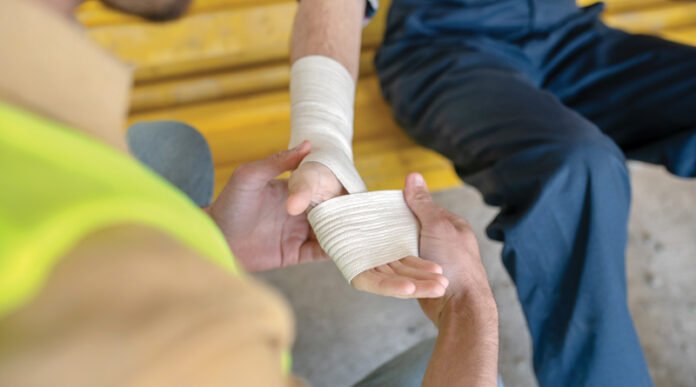We’re all familiar with the signage proudly displayed at construction sites or manufacturing plants that boast “injury-free for 658 days.” On the surface, this appears to indicate a worksite is a safe place, and it certainly conveys the message that the employers are committed to safety. But what employers may not realize is that the expectation of zero injuries or “one is too many” could actually backfire, and someone could get killed. It seems counterintuitive, but this approach can do more harm than good. When the safety mandate is “zero harm or else,” it can lead to underreporting of injuries minor enough to hide, which decreases operational knowledge, and can create a punitive culture of fear. Zero-injury goals can also breed deception and blame between coworkers who rely on each other for their safety. None of these are conducive to successful risk management.
Zero injuries gone wrong
Take what happened at Esso, a large gas plant in Victoria, Australia, which was known for touting its 500 million working hours without injury, and even received a prestigious safety award from the government in 1998. Shortly after receiving the award, a massive explosion at the plant killed eight workers. An investigation later found the explosion was avoidable and inevitable because the company had inadvertently created a culture of underreporting safety problems in order to maintain its impeccable record of zero injuries. Had the company fostered a culture that encouraged open reporting of all safety concerns, even minor injuries, it could have potentially identified the underlying cultural or production issues that led to the worker fatalities. Obviously, leadership at the gas plant aimed to keep its workers safe; but its executive leadership had a zero-injury vision that ended up backfiring and leading to much worse.
Remember the Transocean Deepwater Horizon oil rig explosion in 2010? It was a catastrophic event that resulted in the deaths of 11 workers and was one of the largest environmental disasters in American history. Months before the explosion, the Minerals Management Service, part of the U.S. Department of Interior, awarded Transocean its SAFE award for “outstanding drilling operations” and a “perfect performance period.” A Transocean spokesperson told ABC News, “the awards recognized a spotless record during repeated MMS inspections, and should be taken as evidence of the company’s longstanding commitment to safety.” Handing out safety awards based on criteria of a “spotless record” is relying on the absence of negatives as a barometer of safety success. It was a cultural blindspot for Transocean that sadly got 11 people killed.
Zero injury policies can backfire
In a zero-injury performance environment, the peer pressure to stay at zero is immense. Nobody wants to be the one that takes the jobsite from 758 days without injury to zero, and workers may hide minor injuries or accidents as a result. This mythical zero-injury target becomes even more problematic when the pay structure for employees and leaders are attached to a zero-injury target.
Sidney Dekker, an author, and professor who founded the Safety Science Innovation Lab at Griffith University in Brisbane, Australia, has made the science of safety his life’s work. In his paper, “Zero commitment: commentary on Zwetslootet al., and Sherratt and Dainty,” Dekker suggests that zero injuries should be a commitment, not a target. He states, “When a measure (injuries, incidents) becomes a target (in this case: zero), it stops being a measure. It just becomes a target that needs to be achieved at pretty much all costs.”
RELATED: Why You Should Develop a Wet Work Program for Construction Sites
The research has shown that a target of zero injuries results in a decline in honesty and disclosure of safety concerns or injuries, thus reducing the number of opportunities for leaders to identify problems and manage operational risk. Dekker cites a study that concluded, “in a year when the industry produced more incidents, a construction worker was much less likely to get killed. And vice versa.” In other words, the research showed that as worker injury numbers went down, worker fatalities went up in construction.
Furthermore, Dekker points out, “What hurts workers is not what kills them, and vice versa. So declaring a zero vision for what hurts people won’t do anything to prevent them from dying.”
Construction is a safety-sensitive industry in which workers’ compensation claims are much more common than in other industries. Zero injuries in a high-consequence industry is an unreasonable mandate, but that doesn’t mean there shouldn’t be an ethical commitment to avoiding them. Honor your ethical commitment as a business to not hurt anyone, but moreover, prioritize your moral responsibility to learn from injuries in order to prevent them in the future.
Why a ‘just culture’ provides a better path forward
So what is a better way for construction company owners and leaders to keep workers safe? The answer could be a “just culture.” Here’s why: You can’t both punish workers for safety violations and teach them to be safer at the same time.
A just culture safety philosophy—a nod to the balanced scales of justice—seeks an equilibrium between accountability and blame. It fosters an environment where leaders are not only trying to determine why something went wrong, but how they can facilitate things going right. A just culture is also an agreement and ethical commitment between employee and employer to having zero people be harmed, but also not punishing them for honest mistakes because that can and will drive trust and psychological safety underground.
Here’s an example of how an accident on a construction site might play out in a company that has adopted a just culture perspective on safety:
A high-performing employee causes a serious safety incident that results in a work stoppage. Instead of delivering a swift punishment equal to the severity of the incident or, conversely, downplaying the incident and its severity to escape scrutiny by higher-ups, the foreman would take the following steps:
- Immediately report the incident up the chain of command.
- Request an investigation of the incident by fresh eyes qualified to do so.
- Sit down with the employee to discuss the facts surrounding the incident, the employee’s intent at the time, and the potential system errors that could have taken place.
When incidents happen, many leaders immediately think about consequences and punishment. However, a default punitive approach can create a culture of distrust and fear. It also may not correct anything and could make things worse for the employees involved. At the same time, ignoring or downplaying safety incidents marginalizes safe practices and company policies, reduces productivity and sets a mood of leadership indifference to safety incidents.
By talking through the incident and examining the facts, teams learn from their mistakes and are given opportunities to take ownership of them in front of their peers as well as their leaders. This “restorative justice” approach to safety ensures accountability when things go wrong and builds an environment of learning so that the root causes of an incident can be addressed.
Just culture is not a new concept. It has been deployed in high-consequence industries such as aviation and healthcare, and it makes perfect sense for the construction industry. In a company that has fostered a just culture, employees who willingly and proactively report safety concerns or incidents are protected and praised for coming forward. Whistleblowers are encouraged to sound the alarm, and bad actors are exposed for who they are and asked to leave the organization.
Willful vs. unintentional incidents
Just culture philosophy says that after an incident, you can either punish or you can learn, but you can’t do both. That said, punishing employees for incidents caused by a willful and intentional violation of well-written policies, procedures or best practices is entirely justified—if that’s what really happened. Just culture draws a line between honest mistakes made by good employees, and bad actors who are a liability to your operations and should be terminated immediately.
For example, when an employee commits a safety violation by drinking on the job or willingly not performing a required lockout-tagout procedure, this must be a punishable offense. Conversely, a leader of a field crew in construction, who is invariably asked to lead more work with fewer resources while under incredible production pressure, should not be punished when a crew member accidentally breaks their hand with a hammer. Learning should take place immediately, and the individuals responsible for stripping away resources and placing unreasonable downward pressure on the crew should be asked to explain why they fostered an environment that led to the injury.
Self-reporting is key to a just culture; employees who self-report operational shortcomings or injuries should be granted clemency and celebrated in front of peers for their humility and extreme ownership. This message will positively impact the presence of safety as a priority on the jobsite.
Creating a Just Culture
When an organization is ready to make the shift from a zero-injury culture and start building a just culture, one of the first steps leaders need to take is to create and publish a vision for safety that clearly states the company’s ethical commitment to avoiding injuries and learning from incidents, rather than punishing good people when bad things happen.
The company must prioritize teaching leaders how to lead from a just-culture perspective—not only formal leaders, but also informal leaders who are on the front lines. Safety issues should be studied, openly discussed, acted upon, and learned from, and the findings should be taught and shared across the business. Employees will feel supported and protected in this type of environment and will see that their employer cares about their health and safety. Productivity will increase, as will retention of top talent, and brand awareness of a business now known for both speed and safety. Just because OSHA requires us to track injuries by law doesn’t mean they need to become the enterprise safety goals for our business. The goal should be to do no harm through methods and strategies that are proven to reduce risk.
Safety programs based on a just-culture philosophy may sound expensive, but they don’t have to be, and they will actually make money in the long run. Any business owner or leader can lead a just culture of safety with time, effort and the right support. It just takes courage, and a shift in perspective and dedication.








